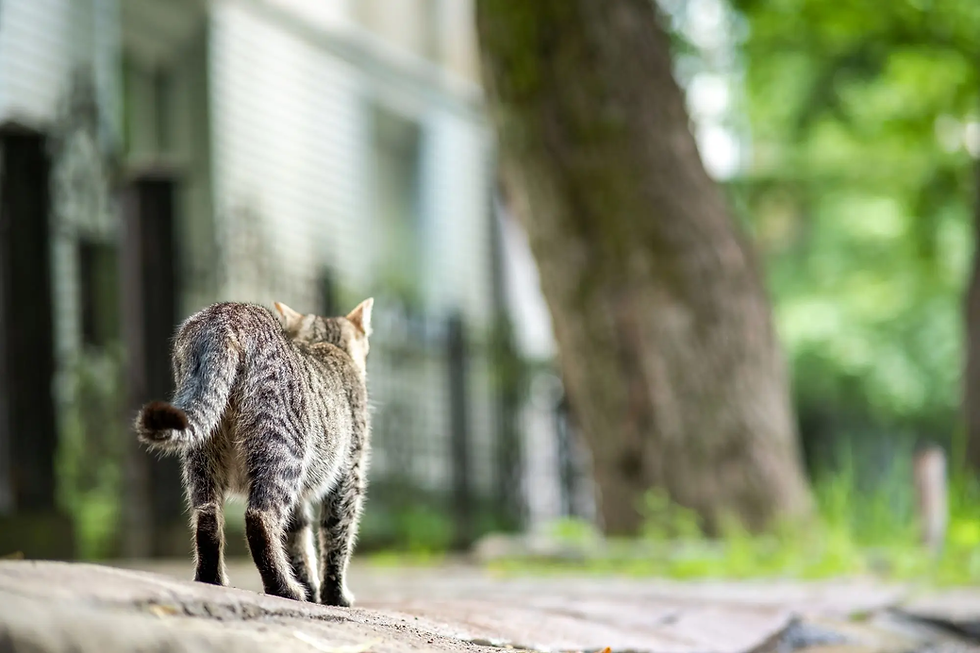Blurring The Lines Between Pet & Family
- V Carpio

- Dec 2, 2020
- 3 min read
Have you ever stopped to wonder what your cat is thinking?
That ‘I don’t give a f***’ stare he gives you after he just typed ‘jjjjjjjjjjjjjjjjjjjjjjjjjjjjjjjjsttttttttttttttttttttttttttttttttttttttttt’ for you.
Was he trying to help me with my work? Is this vengeance for not playing with him 24/7? Or does he really not give a f***? This then made me think whether I, with higher intellect, logic and reasoning would do the same.
The answer is probably yes.
Maybe we’re not so different. I thought I would investigate our similarities further and find out how our pet crosses the line to become my baby.
The first bombshell I discovered is that we share 90% of our DNA with cats. Don’t go running for your gimp suit just yet, we’re far away from being Catwoman.

That said, it is well-established in the scientific community that our genes play a role in what we do and why we do it; therefore it highlights an interesting point... maybe our gene sharing can contribute to our behavioural similarities?
Non-cat owners might be reading this and thinking, ‘this is ridiculous, I do not sleep and lick myself clean all day’. That is true, at face-value we don’t seem to be the same as cats; even though, if our life-span was longer and we had the ability to, I’m sure most of us would like to sleep longer.
But think about our social interactions, we change how we speak and act depending on whether we are speaking to an adult, child, baby, work colleagues etc. Even to our cats! We have developed a way that’s unique to cats, in how we behave and speak. Thus, creating a new social group dynamic containing established behavioural norms.
Even though we change our demeanor to interact with cats, our furry friends still treat us as other cats says John Bradshaw in his book ‘Cat Sense’.
Both of us, cats and humans alike have not been bred to be faithful to one another – like dogs have to humans. Each of us are independent thinkers and we make our own decisions. Hence the fact that they see us as a bigger, maybe clumsier cat, and even on the same social level as them must mean that there are traits that blur the boundaries between our social paradigms; thus permitting lifetime bonds to be created between our species. This may explain how we see human traits in cats and how cats see us as big Mr Bean sort of cat.
Feast your eyes on some of these common traits:
Both species love napping. You can’t deny it. We love napping so much that countries have incorporated it into their day-to-day lives. It’s called a ‘siesta’ in Spain.

We both love food and we both get grumpy when we don’t eat. My wife says our cat is my child: we sleep the same, we snore the same, we have the same attitude and we are both foodies…big ones. We’re now both on diets.
We are both also comfortable in routines. Cats are creatures of routines, a stress-free cat is a happy cat, and a happy cat is one with a effective routine. Think about our Monday to Friday. For most of us we have the same morning ritual that sets us right for the day. Yes, it is true that we can adapt to changes in our environment and changes in our routine and cats can’t. But changes are stressful for the both of us and we try to avoid it where possible.
Boredom leads to self-destruction. When we don’t feel fulfilled, driven or challenged we turn to vices that satisfy our craving for stimulation in the short term. When I was younger, I used to smoke to pass the time because I was bored waiting for the bus – in Basingstoke none would appear for 30 minutes and then a convoy of 3 buses would appear; what’s the point of a timetable Stagecoach? We also turn to fast food or other quick, unhealthy choices for the short feel-good state.
Avoid boredom and keep your cat entertained.
All these common behavioural traits are topped with the icing on the cake that is that cats are independent thinkers. They were not bred to be domesticated, they domesticated themselves. This independence makes them enigmatic and their very expressive facial and body expressions makes it seem that they are capable of thinking along the same lines as us. Hence providing a canvas for human emotion, making them perfect for captioning and anthropomorphization. How do you think cats won the internet?
Anthropomorphization is what turns our pets into our babies. This has become so prevalent now that cats and other pets have been deemed to deserve attention in family therapies. In the end, the bonds we make with these creatures are mutually beneficial, even at a therapeutic level. So whether you see your cat as a pet or a baby, the important thing is that there is a mutual sense of love, respect and happiness.




Comments